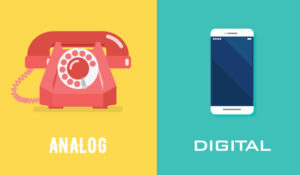Mitel discuss how to give your digital customer service strategy a valuable, human touch.
Over the course of the pandemic, consumer expectations for their interactions with businesses have climbed to new heights. In many ways, though, this isn’t surprising. After all, it’s the natural outcome of our innate need for human connection.
It’s a fact as old as mankind itself that humans crave connection with other humans.
During the pandemic, the loss of in-person interaction has been felt acutely and is a key reason so many are struggling with social distancing measures and stay-at-home mandates.
Everyone misses socializing in real life with colleagues, family and friends. We’re all yearning for the moment when we can visit our favorite bookstore and chat freely with the owner.
Why Human Connection Is Vital
To understand why human connection means so much to us, it’s helpful to look back on history. In his 2016 book, “Sapiens: A Brief History of Humankind,” Yuval Noah Harari explains why humans are primarily social animals.
One theory of language, for instance, is that it evolved as a way to gossip. “Social cooperation is our key to survival and reproduction,” Harari writes.
Indeed, the need to connect is evident in the relentless push throughout human history to develop new, more efficient modes of communication. A look at the evolution of communication technology puts this into perspective.
Humans began to speak about 500,000 years ago and began to write sometime between 30,000 and 100,000 years ago when they drew symbols on sticks and eggshells.
Both carrier pigeons and fire were once used to communicate across distances. For instance, around 200 BC smoke signals were used to send messages along the Great Wall of China.
The invention of the printing press ushered in the era of mass communication. The telephone allowed private conversations between two people across distances. But modern communication technology has evolved faster over the last 15 years than at any other time.
The combination of smartphones and social media has capitalized on our natural need for human connection.
When you think about digital communications within this context, you can see why the physical distance created by quarantines and lockdowns has led to such high expectations.
As more people began working from home, video calls and webchat became virtual lifelines to our wider business and social circles. At the same time, consumer shopping habits changed out of necessity.
More people bought groceries online and had them delivered. Since COVID-19, 21% of consumers tried online grocery shopping for the first time.
The New Bar for Customer Experience
Low-touch behaviours, such as grocery delivery, curb-side pickup and buy online/pickup in-store, are likely to stick post-pandemic. McKinsey found 23% of consumers are having their groceries delivered, and of these, almost half (49%) say they plan to continue doing so after the pandemic.
This rise in eCommerce, along with more people working from home, is raising the bar on customer experience. Prior to the pandemic, businesses were beginning to focus on customer experience as a way to differentiate themselves from their competition.
But with more people shopping, working and socializing online, developing a stellar customer experience for everyone will be more vital than ever.
For instance, in the pandemic, doctors and patients were forced to shift to telemedicine rather than in-person visits. That means more people who haven’t used digital communications before—such as older generations—are learning to adapt.
Designing experiences with digital inclusivity in mind will be vital. Businesses will need to create customer experiences that adjust to the proficiency level of new users. They’ll also have to do so for those with disabilities.
Most importantly, to succeed in the post-pandemic world, companies need to deliver exceptional customer experiences that reimagine human connection.
Indeed, more than half (55%) of UK marketers say the consumer shift to online exposed gaps in the customer journey. That means there’s an enormous opportunity for businesses to set themselves apart by creating more personal interactions in the buying experience.
The good news is that businesses have the tools they need to connect with customers through digital channels. Today’s communication technology is rising to the occasion, enabling personalization at scale.
It’s now possible to infuse the consumer journey with more human and personalized interactions using communications tools such as interactive self-service, video, webchat and more.
Our human need for connection may be evolving into new channels, but it’s an age-old desire. Delivering a more tailored, immediate and satisfying omnichannel experience is the key to building brand loyalty now and well into the future.
Author: Guest Author
Published On: 9th Mar 2021
Read more about - Guest Blogs, Mitel















